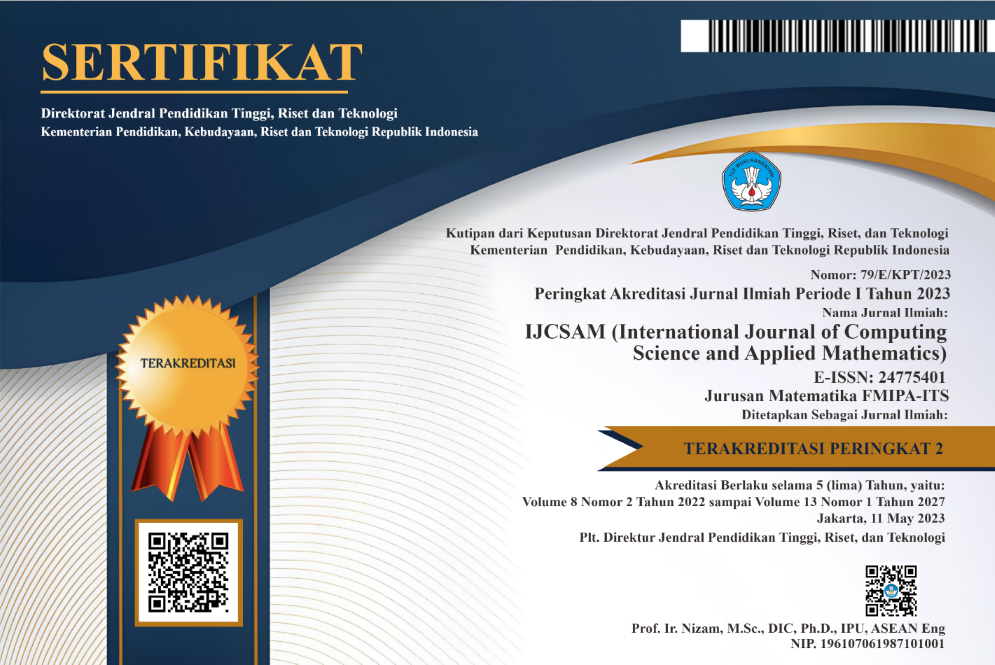Analysis and Optimal Control in the Cancer Treatment Model with Combining Radio and Anti-angiogenic Therapy
Abstract
Full Text:
PDFReferences
Unknown, “Infodatin,” Pusat Data dan Informasi Kementerian Kesehatan RI, Jakarta, Tech. Rep., 2010.
K. Chudej, L. Wagner, and H. Pesch, “Numerical solution of an optimal control problem in cancer treatment: Combined radio and anti-angiogenic therapy,” IFAC-PapersOnLine, vol. 48, no. 1, pp. 665–666, 2015.
L. Perko, Differential equations and dynamical systems. Springer Science & Business Media, 2013, vol. 7.
Subiono, Matematika Sistem. Surabaya: Institut Teknologi Sepuluh Nopember, 2003.
Subiono, Sistem Linear. Surabaya: Institut Teknologi Sepuluh Nopember, 2013.
DOI: http://dx.doi.org/10.12962%2Fj24775401.v3i2.2288
Refbacks
- There are currently no refbacks.
View My Stats

International Journal of Computing Science and Applied Mathematics by Pusat Publikasi Ilmiah LPPM, Institut Teknologi Sepuluh Nopember is licensed under a Creative Commons Attribution-ShareAlike 4.0 International License.
Based on a work at https://iptek.its.ac.id/index.php/ijcsam.






